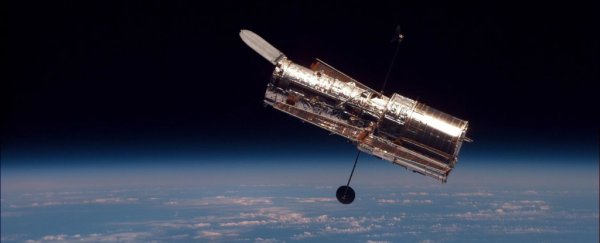The Hubble Space Telescope is currently operating in safe mode, with all science operations suspended, after one of the three gyroscopes used to aim the telescope failed on Friday 5 October.
NASA was quick to offer reassurance: "Hubble's instruments still are fully operational and are expected to produce excellent science for years to come," public affairs officer Felicia Chou wrote in an update on the NASA website.
"Safe mode puts the telescope into a stable configuration until ground control can correct the issue and return the mission to normal operation."
At maximum efficiency, Hubble uses three gyroscopes in order to orient itself to observe a target in the sky.
Failing gyroscopes are not uncommon, so Hubble was equipped with six new ones (which included backups in case of failure) on a 2009 mission to service the telescope, which was launched all the way back in 1990.
The gyroscope has been failing for about a year, and engineers here on Earth have been aware of the issue. This marks the third of those six gyroscopes to fail.
All is not lost. The three remaining gyroscopes have been enhanced, and - in theory at least - will have much longer operational lives than the three failed gyroscopes.
The telescope is currently operating on two of these enhanced gyros. But when the third one was powered up, it wasn't operating as it should be, so NASA Goddard engineers placed the telescope in safe mode while they try to figure out the problem.
If needed, the Hubble Space Telescope can operate using just one gyroscope; and, as we saw with the Kepler Space Telescope, which lost the second of its four reaction wheels in 2013, a space telescope can continue to be useful even after it loses its ability to point effectively.
But we still have to stare down the barrel of an uncomfortable truth: Hubble is wearing out, and that 2009 service mission was the last. Whatever problems the telescope has now need to be fixed remotely, or not at all.
Hopefully, Hubble can hold out until the launch of its successor, the James Webb Space Telescope, in 2021.
"If the outcome indicates that the gyro is not usable, Hubble will resume science operations in an already defined 'reduced-gyro' mode that uses only one gyro," Chou wrote.
"While reduced-gyro mode offers less sky coverage at any particular time, there is relatively limited impact on the overall scientific capabilities."
